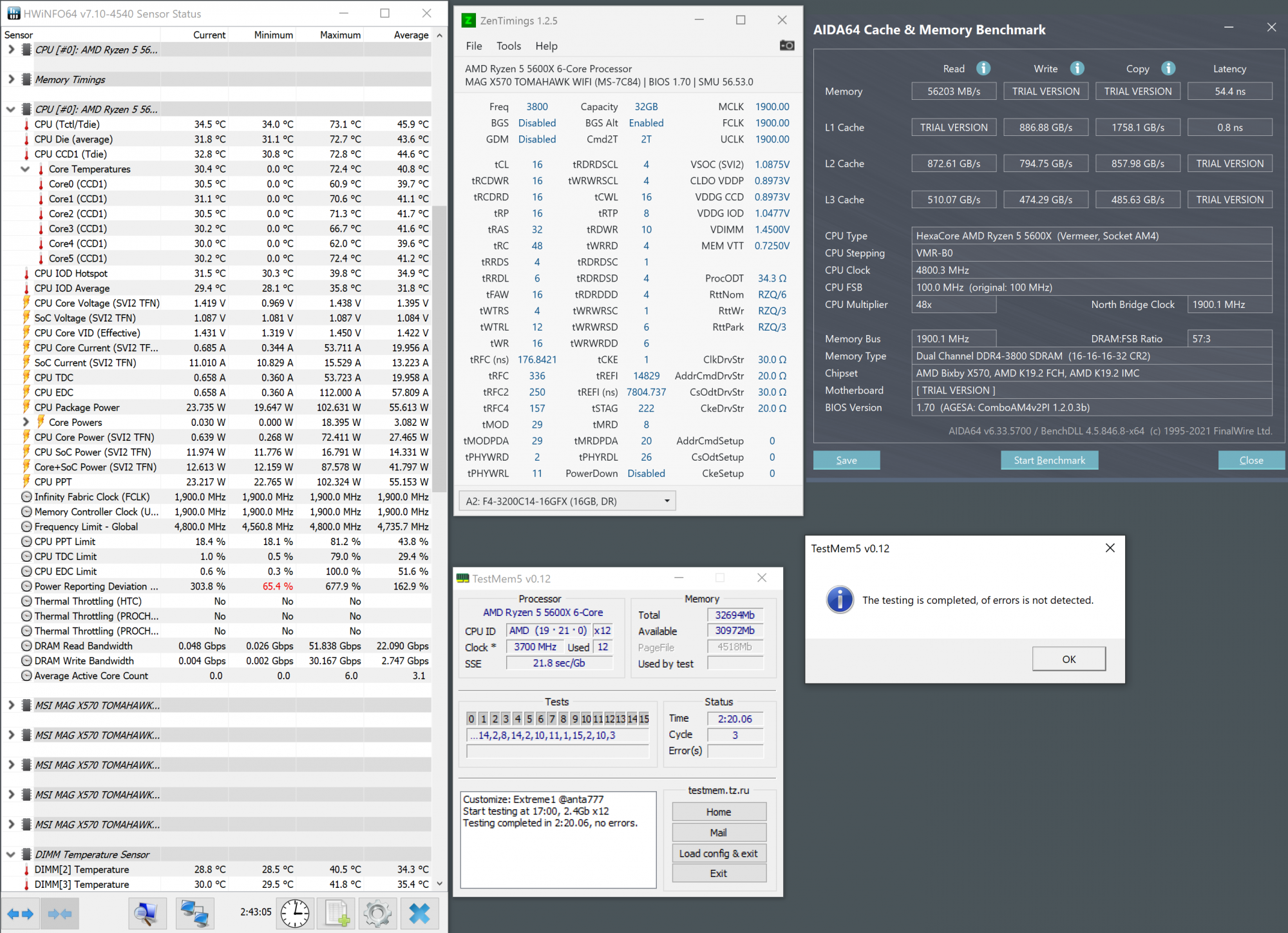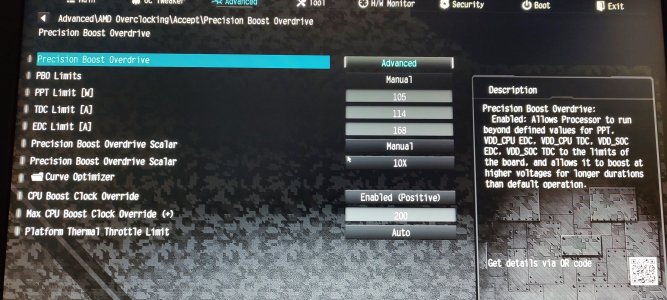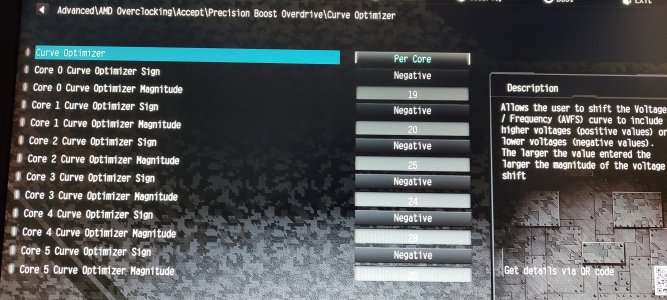Skull_Angel
[H]ard|Gawd
- Joined
- May 31, 2010
- Messages
- 1,664
Hey guys, just needed to vent a bit because this is the first build I've put together in over 20 years that's been so simple to tune that it's actually frustrating; I swear it's going to give me anxiety due to the lack of issues throughout stability testing.
I went into this build fully expecting to encounter some issues I've read about in various forums, but have been pretty lucky with nothing showing up, which is great. The only tuning problems I've had so far have been from manual RAM overclocking, but that's been ironed out with great success on settings I'm content with.
The CPU overclocking through PBO, auto-oc, and curve offsets has been what's driving me up the wall though; it's simple (too simple?? I've only ever done manual OCs before), but mostly undocumented and seemingly works even with horrible settings. I spent too long looking for info only to find users experiences, so decided to experiment myself until reaching the performance limits of what my chip and setup could do... In all that time testing and benching the only settings to cause any issues were curve optimizer and it's got me paranoid as to whether the damn thing is actually stable! It's run the gauntlet of tests from 10 cycles of y-cruncher, various OCCT tests and settings, 20+ hrs CoreCycler, TM5, 20+ hrs P95, ect. Is FIT just too aggressive at protecting the CPU? If it is, can this really be considered stable? Am I overthinking this??(probably)
For all intents and purposes tuning should be considered finished and all that's left to finalize it is a clean install. There's just that little voice that keeps saying "It can't be this easy, right??".
/rantoff
System specs for anyone interested:
AMD 5600x (aOC +150, PPT 114, TDC 72, EDC 104, minor curve offsets 0, -3, -12, -12, 0, -3)(NH-D15)
MSI x570 Tomahawk (1.2.0.3b)
G.skill FlareX 2x16gb (3800/1900 16-16-16-16-24-40 @1.43v)
Sapphire Nitro+ 6700xt (stock OC)
BeQuiet Straight Power 11 750w
I went into this build fully expecting to encounter some issues I've read about in various forums, but have been pretty lucky with nothing showing up, which is great. The only tuning problems I've had so far have been from manual RAM overclocking, but that's been ironed out with great success on settings I'm content with.
The CPU overclocking through PBO, auto-oc, and curve offsets has been what's driving me up the wall though; it's simple (too simple?? I've only ever done manual OCs before), but mostly undocumented and seemingly works even with horrible settings. I spent too long looking for info only to find users experiences, so decided to experiment myself until reaching the performance limits of what my chip and setup could do... In all that time testing and benching the only settings to cause any issues were curve optimizer and it's got me paranoid as to whether the damn thing is actually stable! It's run the gauntlet of tests from 10 cycles of y-cruncher, various OCCT tests and settings, 20+ hrs CoreCycler, TM5, 20+ hrs P95, ect. Is FIT just too aggressive at protecting the CPU? If it is, can this really be considered stable? Am I overthinking this??(probably)
For all intents and purposes tuning should be considered finished and all that's left to finalize it is a clean install. There's just that little voice that keeps saying "It can't be this easy, right??".
/rantoff
System specs for anyone interested:
AMD 5600x (aOC +150, PPT 114, TDC 72, EDC 104, minor curve offsets 0, -3, -12, -12, 0, -3)(NH-D15)
MSI x570 Tomahawk (1.2.0.3b)
G.skill FlareX 2x16gb (3800/1900 16-16-16-16-24-40 @1.43v)
Sapphire Nitro+ 6700xt (stock OC)
BeQuiet Straight Power 11 750w
Last edited:
![[H]ard|Forum](/styles/hardforum/xenforo/logo_dark.png)





